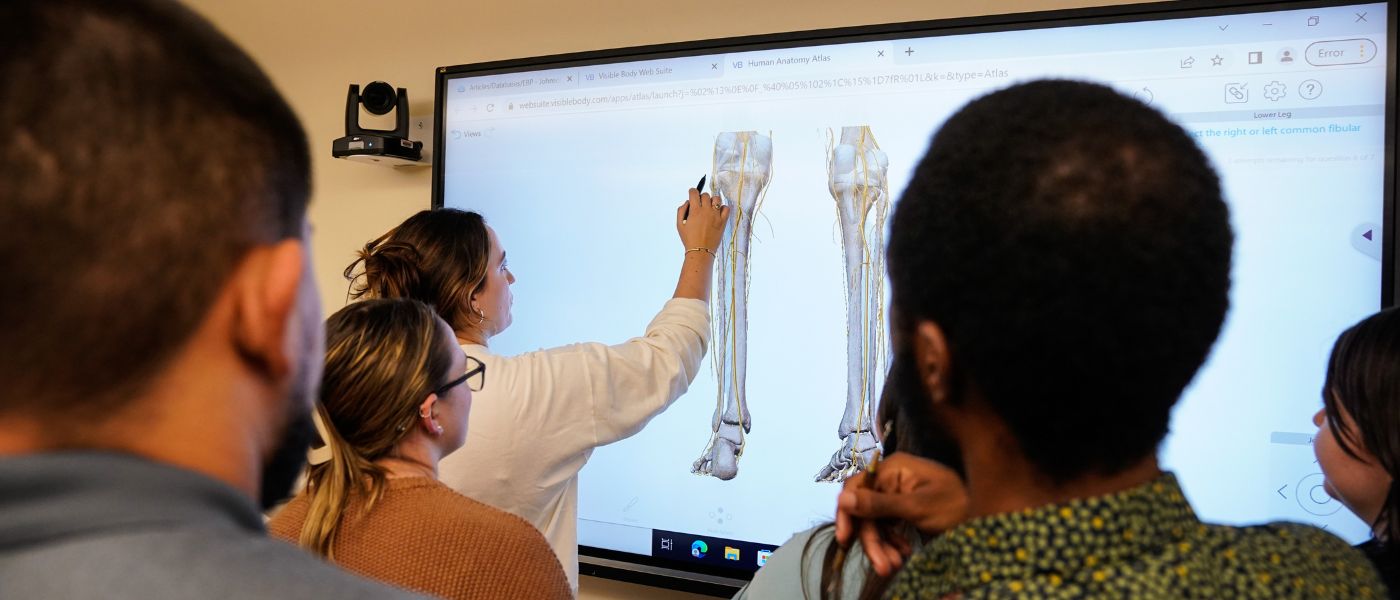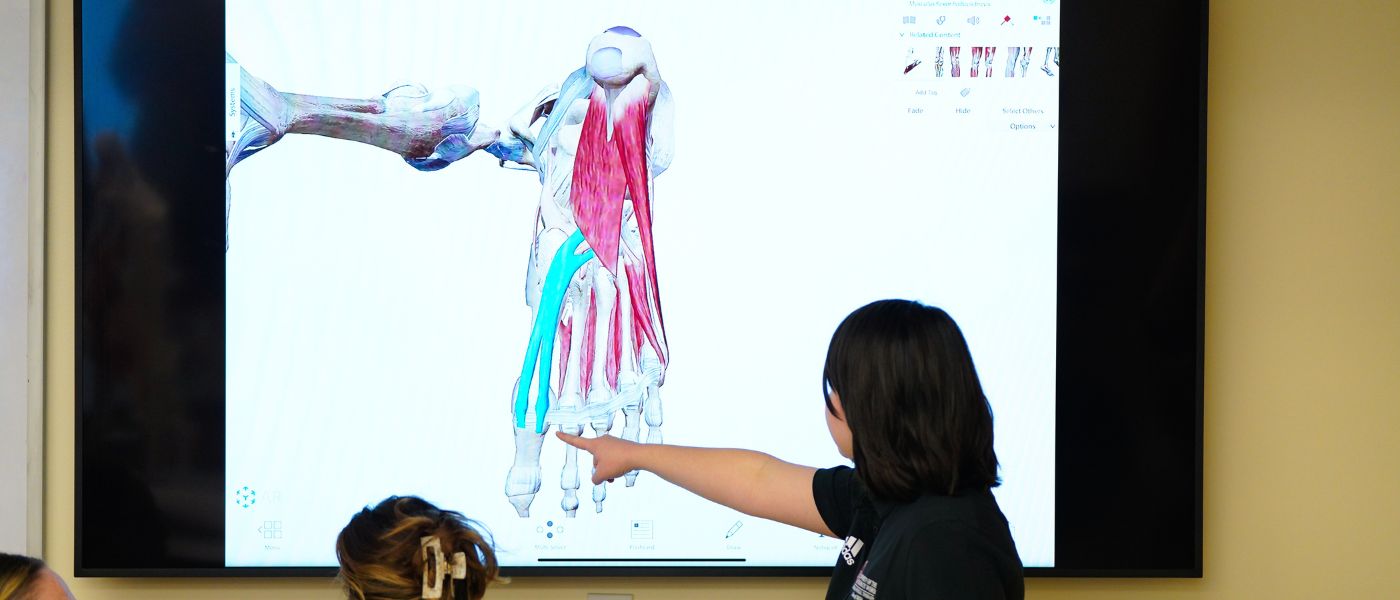Innovative Technologies Elevate Student Engagement in PT Science Lab
Dr. Steve Goffar reflects on the invaluable improvement of the Foundational Science Lab

I’ve been teaching in the foundational science lab at the school of physical therapy for several years, and I've always been disappointed in its ability to convey the message that I'm trying to get across. Until now, it has fallen short in its ability to demonstrate fine detail in radiology images, and in photographic images, for anatomy, it has always been quite limited.
The updates we've had recently, have brought our student engagement in class to the next level. The Doctor of Physical Therapy (DPT) program has always stressed active learning and seeing groups of students huddled on a laptop grappling with a problem case, or challenging learning objectives has been a common sight. Now we're seeing student groups out of their seats engaging with each other and the content on an active touchscreen display, a monitor capable of streaming content from any device in the room. In today's session, what you're seeing is that faculty have established four or five learning zones, with objectives and requirements in each one, and the student group spends 20 minutes and so in each zone.

Some of these zones are more simple knowledge acquisition level objectives, or self-assessments. And those don't have faculty directly monitoring them. However, the faculty spent hours previously creating soft chalk modules, online quizzes, and developing resources that would be readily available to them. This additional preparation allows the faculty in the room to engage with the students in the part of their learning that requires the highest level of explanation in order to attain mastery, the highest order objective and application-level objectives.
When I teach in this room, I also use the ability to broadcast and receive information from the students. Typically, a student lecture hall would be able to support 30 students or more and the students are forced to interact with the information from their seats, digesting the content on the screen and I use a laser pointer to point out specifics. In this scenario, students with visual impairments and students with auditory impairments don't get as great a benefit from that setting. In our current setting, anything that I display on the main image screen, whether it be a pointer image, or a drawn image on top of the electronic content is also displayed on every screen in the room.
We leverage that one step further to say that it's accessible on every zoom screen or every echo 360 screen recording that content, so that every learner gets the direct benefit like they're sitting in the front row.

